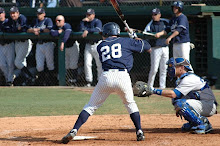- Create your circuit with 8 to 12 exercises or stations that target the entire body.
- Perform each exercise for 30 to 90 seconds, allowing yourself 15 to 30 seconds of rest between each station.
- Circuit training can be completed 2 to 4 times per week. Because it incorporates strength training exercises, allow at least 48 hours between sessions that work the same muscle groups.
- Select weights/resistance that will allow you to perform the exercise for the entire period of time while still providing a challenge.
Friday, March 27, 2009
Circuit Training
Thursday, March 19, 2009
Core Training
Core Exercises

Crunches with Twist
EXHALE: Slowly lower legs several inches to the left without touching the floor, then, while keeping your legs straight, bring your legs up from the left and lower them on the right several inches from the floor.
Friday, March 6, 2009
Benefits of Core Training
Core conditioning and abdominal conditioning have become synonymous in recent years but the abdominal muscles alone are over-rated when it comes to real core strength or conditioning. In reality, the abdominal muscles have very limited and specific action. The "core" actually consists of many different muscles that stabilize the spine and pelvis and run the entire length of the torso. These muscles stabilize the spine, pelvis and shoulder and provide a solid foundation for movement in the extremities. Core conditioning exercise programs need to target all these muscle groups to be effective.
What are the benefits of core strength training to the athlete?
- Improved body control and balance
- Increased power output from both the core muscles such as the shoulders, arms and legs
- Reduced risk of injury
- Improved balance and stability
- Improved athletic performance!
Core Training, overlooked but vital for athletic development
Core Training for athletes may be one of the most important parts of the body to train. There are many misconceptions of what your core consist of. The "core" actually consists of many different muscles that stabilize the spine and pelvis and run the entire length of the torso. These muscles stabilize the spine, pelvis and shoulder and provide a solid foundation for movement in the extremities. These muscles help control movements, transfer energy, shift body weight and move in any direction. A strong core distributes the stresses of weight-bearing and protects the back.


